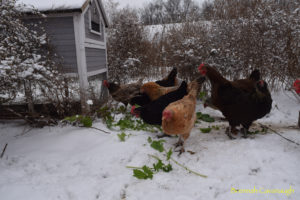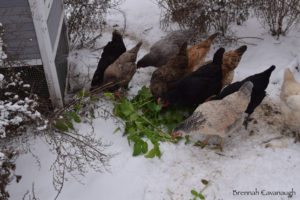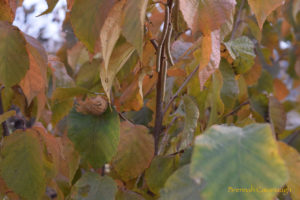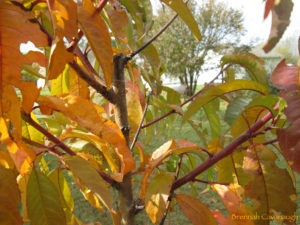
This time of year is often not the easiest to find good photography opportunities; it is not yet really snowy and there are no interesting icy displays on the creek, and most of the plants and insects are dormant by now. The wild roses provide one exception to that (not the only exception, but it’s the one I’m focusing on today). The fruit of the rose plant, the rose hips, are not only at their most colorful right now, but also at their most flavorful. Like the autumn olive berries, rose hips get tastier after they’ve been through a few freezes. They are also extremely high in vitamin C and other nutrients.
A couple years ago we tried harvesting some of them. There are a couple of different species of wild roses around, and the ones with larger hips (about the size of a blueberry) seemed like they would be more practical to harvest than the tiny ones of the species in the photo. They were more practical, but we soon realized that the tiny ones were the ones that actually tasted good. The larger ones were tasteless in comparison. This was a problem, though, because each of those tiny hips were stuffed with seeds that needed to be removed. There was no way to do that at all quickly, and the results didn’t seem worth it. This year, a better use for them has come to mind. We have been making kombucha (which is a fermented tea) for a while now, and while experimenting with different ingredients to flavor it, one that was particularly popular with us was rose petal. Rose hips have a similar (although I think slightly sweeter) flavor, and using them as a flavoring for kombucha would not require removing the seeds. And if all else fails, at least they are fun to photograph!










